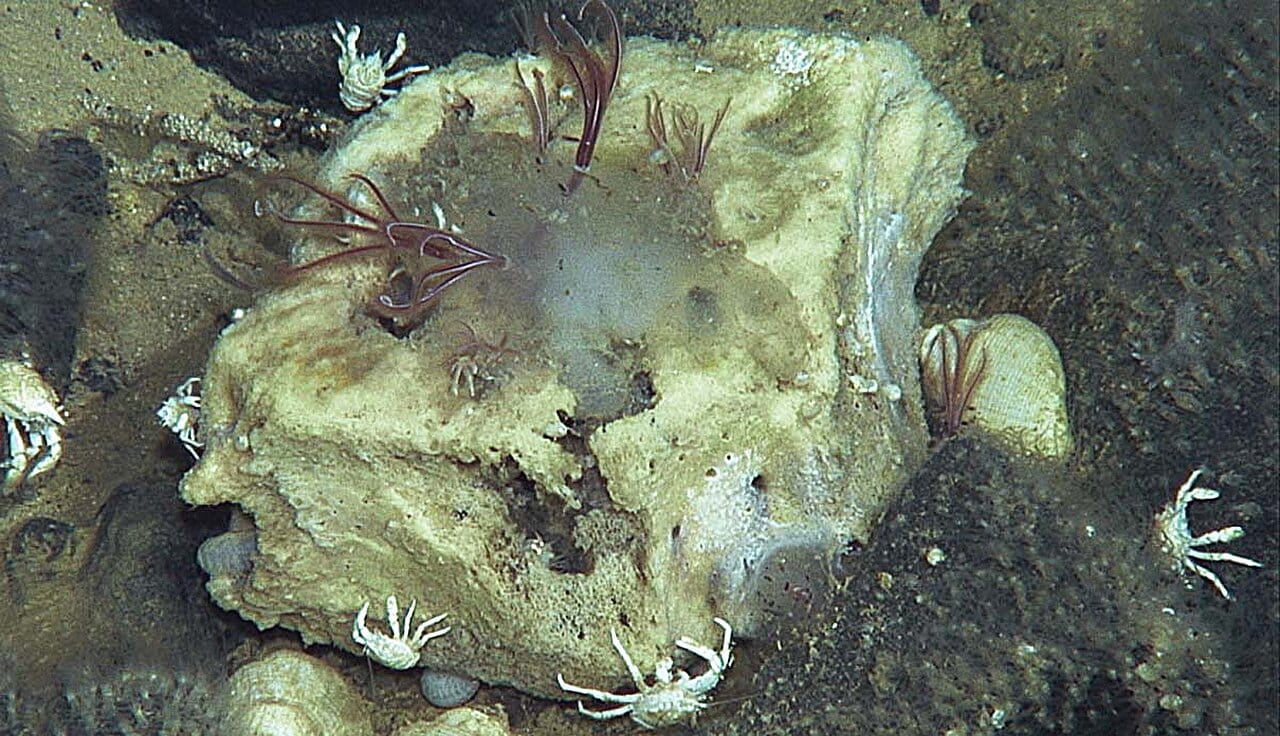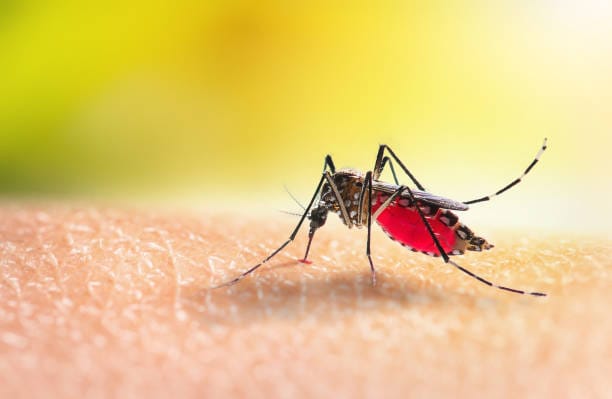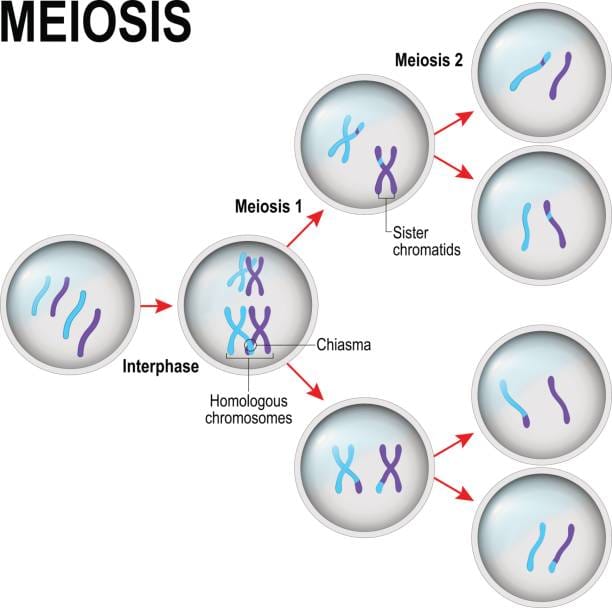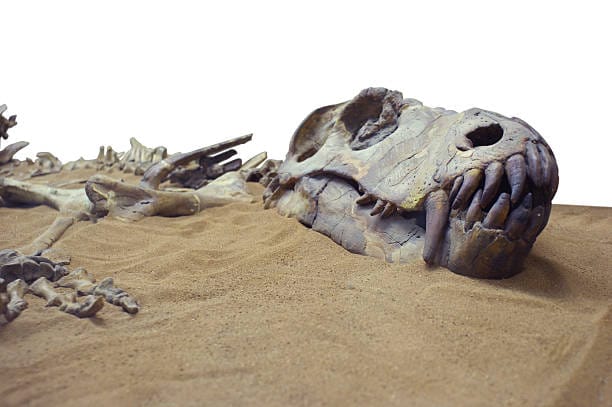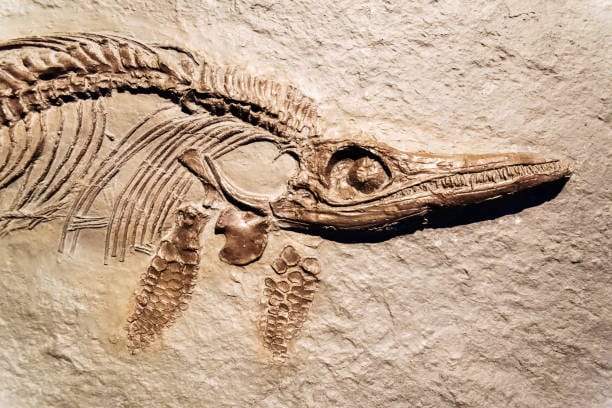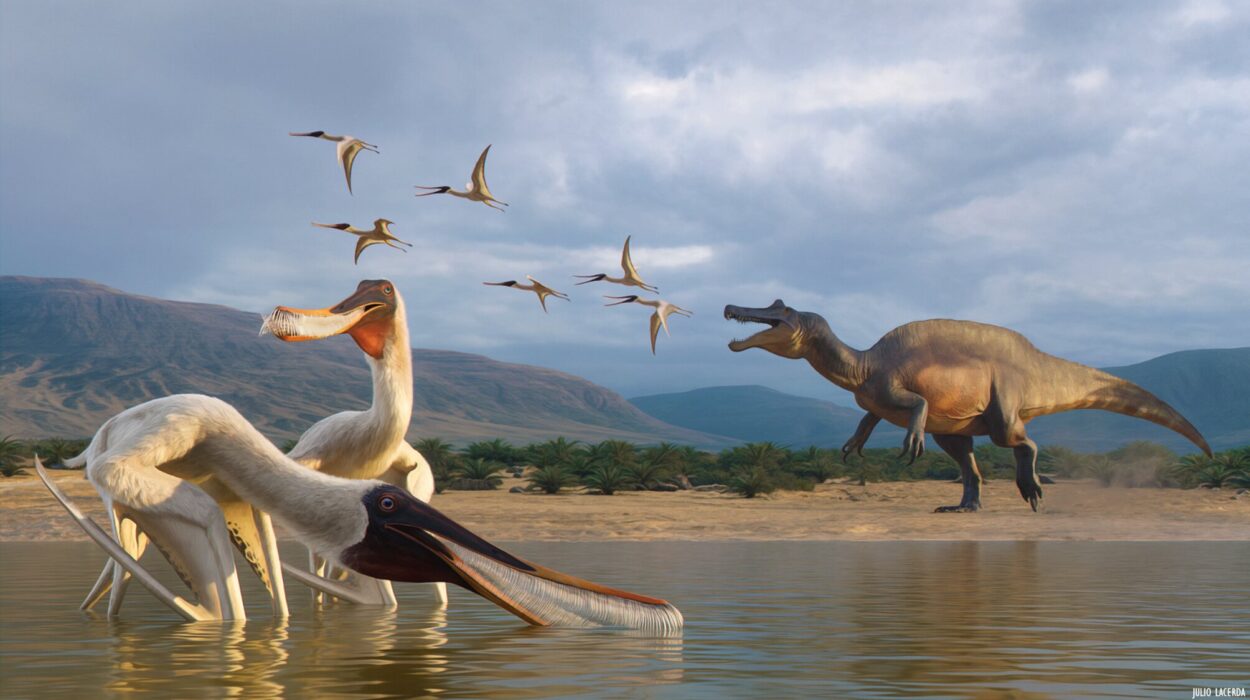Far below the ocean’s sunlit ripples, a drama has been unfolding for more than a hundred million years—a secret, silent feast upon the bones of giants. When colossal marine reptiles once prowled the ancient seas, their bones became the banquet tables for creatures so strange, they almost seem born of science fiction: bone-eating worms.
Now, in a remarkable piece of scientific detective work, researchers have traced the history of these hidden marine recyclers back into the age of dinosaurs. In a new study published in PLOS ONE, scientists reveal that mysterious burrows etched into fossil bones belonged to creatures astonishingly like modern-day Osedax worms—creatures without mouths, without stomachs, yet capable of dissolving solid bone.
The discovery suggests that bone-eating worms have been quietly shaping the ocean’s ecosystem for at least 100 million years, dining first on the bones of prehistoric sea monsters like mosasaurs and plesiosaurs before moving on to the skeletons of whales.
A Secret Banquet Beneath the Sea
Picture the ocean depths, silent and dark. Into that endless twilight, a dead whale—or, millions of years ago, a dead marine reptile—plummets through the water, becoming what scientists call a “whale fall” or, in the ancient seas, perhaps a “mosasaur fall.” Down on the seafloor, this sudden bonanza of food draws an entire community of scavengers: sharks, hagfish, and crabs stripping away the flesh until only bare bones remain.
Then, from the gloom, come the bone worms.
“They’re one of the most remarkable life forms we’ve discovered,” says Sarah Jamison-Todd, a Ph.D. student at the Natural History Museum in London and lead author of the new study. “They don’t have mouths. They don’t have stomachs. Yet they thrive on something as solid and unpalatable as bone.”
Instead of teeth or jaws, Osedax worms deploy bacteria to do their dirty work. These symbiotic microbes break down bone proteins and lipids. The worms, in turn, absorb the liberated nutrients through root-like structures that burrow deep into the bone. This unique system allows them to colonize skeletons scattered across the seafloor—from polar waters to the tropics, and from shallow reefs down to abyssal plains more than four kilometers deep.
Osedax worms were only formally discovered in 2002, feasting on a rotting whale carcass off California’s coast. Yet their story stretches vastly deeper into time.
Fossil Clues in Ancient Bones
The realization that Osedax’s ancestors might have been gnawing into bones since the Mesozoic era came from studying peculiar traces in fossils collected over the past two centuries.
“Some of these fossils were gathered in the 1800s, and the labels are sometimes little more than a handwritten note,” explains Dr. Marc Jones, co-author of the study and curator at London’s Natural History Museum. “We had to piece together their origins, like detectives reconstructing a cold case.”
The team focused on marine reptile fossils from the Cretaceous Chalk deposits of the United Kingdom. These chalks, formed from the skeletal remains of microscopic plankton, have preserved a dazzling array of ancient marine life—from giant predators to delicate shells.
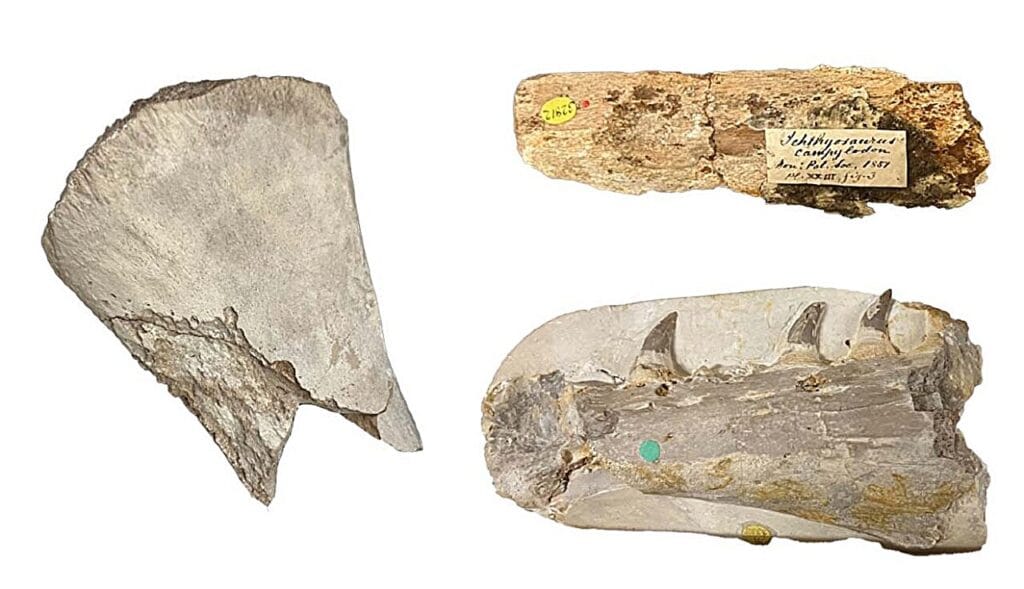
Scanning more than 130 fossil specimens—including bones and teeth of plesiosaurs, ichthyosaurs, and mosasaurs—the researchers hunted for tiny holes, no bigger than pinpricks. Some tunnels spiraled into elaborate networks. Others branched out like trees. Many were so subtle that only CT scans could reveal their full structure.
In total, the team identified seven distinct types of fossil burrows, including six new ichnospecies—trace fossils named not for the animal itself, but for the shape and pattern of the marks left behind.
Naming Worms From Ghostly Traces
Because no body fossils of ancient bone worms have been found, paleontologists must rely on indirect evidence: the patterns of burrows left inside bones. Different modern Osedax species leave different shaped tunnels, allowing researchers to identify them based on their unique “bone signatures.”
The new ichnospecies received poetic—and meaningful—names. One, Osspecus arboreum, earned its title because the burrows branch like the limbs of a tree. Another, Osspecus morsus, derives from the Latin word for “bite,” as it often appears in fossilized teeth rather than bones.
But perhaps the most poignant tribute belongs to Osspecus eunicefootia, named in honor of Eunice Newton Foote. A 19th-century American scientist, Foote was the first to experimentally demonstrate that carbon dioxide traps heat—a foundational insight into the greenhouse effect. Though largely overlooked in her time, Foote’s pioneering work has found new recognition in the age of climate science.
“I wanted to honor her as a trailblazer,” Jamison-Todd says. “Just as she uncovered hidden truths about our atmosphere, we’re uncovering hidden truths about life deep in Earth’s history.”
Ancient Worms, Modern Echoes
The study’s implications stretch far beyond taxonomy. By naming these ichnospecies, scientists have given future researchers tools to recognize bone-eating activity in other fossil deposits, potentially rewriting our understanding of ancient ecosystems.
“These worms were part of a complex deep-sea community,” says Jamison-Todd. “They were crucial recyclers, transforming death back into life by releasing nutrients stored in bones.”
Indeed, bone-eating worms may have shaped the evolution of marine life itself. The sudden arrival of large vertebrate carcasses—whether mosasaurs in the Cretaceous or whales in modern oceans—creates pockets of biodiversity on the seafloor. Each whale fall can sustain dozens of species for decades, nourishing organisms that might otherwise starve in the deep.
And the worms? They’re specialists in turning death into opportunity.
“It shows that bone-eating worms are part of a lineage stretching back at least to the Cretaceous,” Jamison-Todd explains. “They’ve weathered mass extinctions and global upheavals. They’re survivors.”
Secrets Still Hidden Beneath the Waves
Despite this breakthrough, many questions remain. Are the fossil burrows truly made by ancestors of modern Osedax, or did other, unrelated worms evolve similar bone-eating strategies in a stunning case of convergent evolution? And how might changes in ancient marine ecosystems have shaped the diversity and spread of these worms?
“Finding out whether these burrows were made by the same species or different lineages will give us a much better idea of how these animals evolved,” Jamison-Todd says. “And it will help us understand how they’ve shaped marine ecosystems over millions of years.”
For now, the deep sea holds its secrets close. But every fossilized bone—every tiny pinhole drilled into ancient ivory—brings scientists closer to understanding how life endures, adapts, and transforms the harshest environments on Earth.
As Jamison-Todd reflects, “These worms remind us that even in death, there’s life. There’s an entire ecosystem waiting in the shadows, turning tragedy into renewal. It’s an incredible story, stretching from the age of dinosaurs all the way to the present day.”
So the next time you think of a whale—or an ancient plesiosaur—drifting to the ocean floor, imagine the tiny worms waiting below, ready to feast, and to write another hidden chapter in the story of life on Earth.
Reference: Sarah Jamison-Todd et al, The evolution of bone-eating worm diversity in the Upper Cretaceous Chalk Group of the United Kingdom, PLOS ONE (2025). DOI: 10.1371/journal.pone.0326451. journals.plos.org/plosone/arti … journal.pone.0320945
